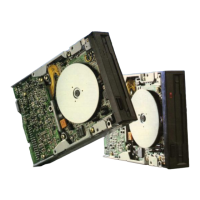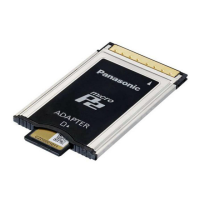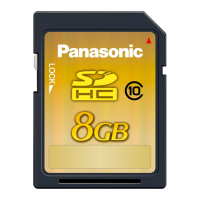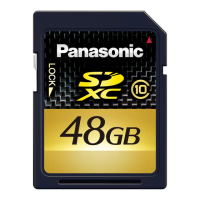4. OUTLINE
OF
MAINTENANCE
•The
following
tools are required
for
maintenance
of
a Floppy Disk Drive.
4.1
Alignment
Diskette
Alignment
diskette
is
used
for
head actuator
alignment
and index sensor
adjustment.
Use
the
right
diskette
as
shown in Table 3.1.
4.2 Exerciser
The exerciser enables you
to
make all adjustments and inspections necessary
for
an
FDD.
Its functions
include
the
following:
(1)
Seek
increment
or
alternate tracks
(2)
Read
(but
no data compare)
(3)
Write
1
For
2F
(All
O's
or
1
's}
(4) Recalibration
to
track
00
The exerciser
has
switches and indicators
to
execute a specified function.
5.
DIAGNOSTIC PROCEDURES
5.1
Error Symptom Recognition
Errors
that
occur because
of
the
wrong
operating procedure,
wrong
programming,
or
use
of
a defective
diskette,
or
soft errors due
to
external
causes,
such
as
contaminated air and random electrical noise, are
often
attributed
to
a drive failure.
Unless a visual inspection
of
the
drive reveals an evident assembly
fault
or
a defect, always confirm errors
with
another
good diskette, and
another
known
good
drive.
5.2 Soft Error Detection and Correction
Soft errors are normally caused by
the
following:
(1) Contamination between read/write heads and diskette. This kind
of
contamination
can be easily
eliminated by
the
liner
in
the
diskette. Contaminated heads can
be
cleaned by a general purpose non-
abrasive head cleaning diskette.
Please
follow
the
suitable procedure
provided
with
the
cleaning
diskette.
(2) Random electrical noise, normally a
few
microseconds
or
less.
(3) Small defects in
written
data and/or track
not
detected
during
write
operation may
cause
soft errors
during
read.
(4) Faulty
grounding
of
the
drive
or
host system
can
also
cause
a soft error.
(5)
Wrong
motor
speed
is
another
cause
of
soft errors.
Take
the
following
steps on
the
controller
side
to
recover from
the
soft errors mentioned above.
(1)
Read
the
track again
ten
times
or
until
the
data
is
recovered.
(2)
If
Step (1} above fails
to
recover
the
data,
access
the
adjacent track. Then return
the
head
to
the
original track.
(3) Repeat Step ( 1
)_
(4) Any error
that
cannot be corrected by
the
above procedure
is
irrecoverable.
5.3
Write
Error
If
an
error occurs
during
write
operation,
it
is
usually detected
during
the
next
revolution by performing a
read operation called
write
check.
To
correct an error,
write
again and repeat a
write
check operation.
If
the
result
is
unsatisfactory
after
ten
or
more
write
operations, perform a read operation on
another
track
to
determine
whether
it
is
the
diskette
or
the
drive
that
is
wrong.
If
an
error persists, replace
the
diskette
and repeat
the
above procedure.
If
the
error still persists, consider
the
drive defective.
If
the
error
is
corrected, dispose
of
the
diskette
as
defective.
-2-

